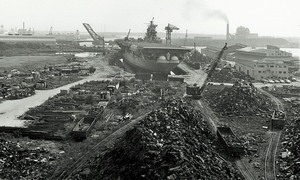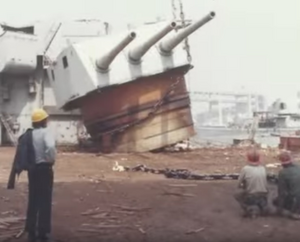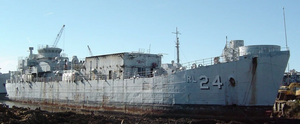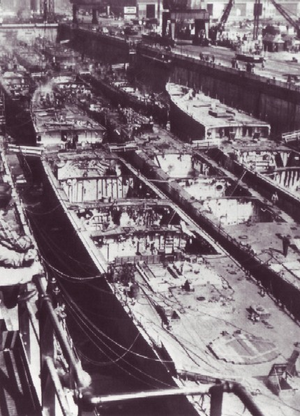拆解二战军舰
Metainfo
- Original text: scrapping the warships of WWII - wwiiafterwwii
- Original publication date: 2020-09-07
- Original translation published: here
- Translation also available at:
- Source language: English
- Target language: Chinese
Translator's notes
I've been a fan of the blog wwiiafterwwii. It's a great blog about WWII equipments being used in various, usually not their war-intended roles after WWII.
This blog is about something slightly different: it's not WWII equipment being 'used' after WWII, but getting disposed after it. However considering the amount of ship scrapping after WWII, as well as all the old ships counting on the parts gained from scrapping, this is deemed to be an unavoidable topic.
I personally went to the Shimizusawa coal-fired powerplant and there are some striking similarities between scrapping a ship and decomposing a coal powerplant. After all a 1920s coal powerplant is a lot like a WWII warship in their machinery and electronics.
拆解二战军舰
我思考了很久要不要写这个主题,因为这其实并不完全是“二战装备在二战后的运用”。但我之前其实也写过二战军舰的保存、现代化,以及它们在不同国家之间转手的文章。所以这大概也并不是完全和主题无关吧。
方法
干船坞
用干船坞拆船的时候,目标军舰会先被送入干船坞,随后从上方开始逐渐拆解。干船坞拆解可以100%回收一艘船上的物料,同时也是最环保的拆解方法。
干船坞最大的问题是成本。干船坞本身数量有限,租金也不便宜,尤其是对于本身利润就难称丰厚的拆船业来说更是如此。除了拆船,干船坞还要用于维护仍在使用的货船、民船或者军舰,预约常常会排满数个月。这意味着拆船公司从拍卖中买到军舰之后,还要凭空等到干船坞空出空位,与此同时买到的军舰持续老化,整体价值也会损失。
搁浅
待拆解的军舰会在涨潮时,以尽可能高的速度故意冲向海滩,从而搁浅在海滩上。拆解工作在退潮时进行,从船头开始逐渐切割。前方的船体被分解之后,剩余的船体会被拖拉机继续拖到陆地的更深处,直到船尾上岸。
除了(目前而言)便宜,搁浅拆解并没有其他的好处。很明显这种拆解方法会制造大量的污染,船上掉落的碎屑和废液不是留在海滩上就是进入大海。拆船用的海滩会充满油(燃油和润滑油)、残骸和金属碎屑。这种拆解方法还非常耗时,所以只适合有廉价劳动力的拆船厂。船的一部分不可避免地会在拆解过程中损失。




